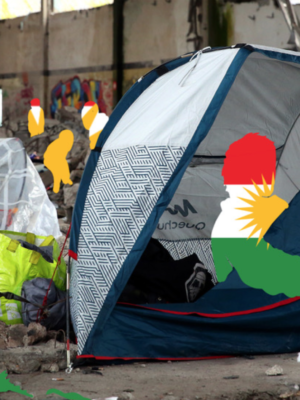65.6 million people displaced worldwide
At the end of 2016 there were 65.6 million people forcibly displaced worldwide. Some 300,000 more than a year earlier. This is stated in the new Global Trends report, published by UNHCR today.

20 people per minute
War, violence and persecution worldwide are causing more people than ever to be forcibly displaced. Among the UNHCR report’s key findings, is that new displacement in particular remains very high. Of the 65.6 million people forcibly displaced globally, 10.3 million became displaced in 2016. This equates to twenty persons becoming displaced every minute. “By any measure this is an unacceptable number, and it speaks louder than ever to the need for solidarity and common purpose in preventing and resolving crises, and ensuring together that the world’s refugees, internally displaced and asylum seekers are properly protected and cared for while solutions are pursued,” said UN High Commissioner for Refugees Filippo Grandi. “ We have to do better for these people. For a world in conflict, what is needed is determination and courage, not fear.”
Internal displacement, refugees and asylum seekers
The figure of 65.6 million comprises three important components. First is displacement of people inside their own countries, whose numbers were 40.3 million at the end of 2016. Second is refugee numbers, which at 22.5 million are the highest ever seen. Third is asylum seekers, people who have fled their country and are seeking international protection as refugees. As of the end of 2016 the number of people seeking asylum globally was 2.8 million. Children make up half the world’s refugees. They continue to bear a disproportionate burden of the suffering, mainly because of their greater vulnerability.
Fast growth
UNHCR produces its Global Trends report annually based on its own data, the data it receives from its partner the Internal Displacement Monitoring Centre, and data it receives from governments. If you compare the reports of the last ten years, you can see that the total number of displaced people has been almost doubled: from 33.9 million people in 1997 to 65.5 million people at the end of 2016. The fastest growth took place in the years 2012 until 2015, as a consequence of war and conflict in Syria, Iraq, Yemen, Burundi, Central African Republic, Congo, South-Sudan and Sudan. But also in 2016, there was a large increase of 10.3 million displaced people overall (either displaced internally or having fled abroad as refugees or asylum seekers). Syria’s conflict remains the world’s biggest producer of refugees. However in 2016 the biggest new factor was South Sudan where the disastrous breakdown of peace efforts in July of that year contributed to the outflow of 739,900 people by year’s end.
Positive news
Luckily, there’s some positive news as well. Around half a million refugees were able to return to their home countries, and about 6.5 million internally displaced people were able to return to their areas of origin. Although we have to note, that many did so in less than ideal circumstances and facing uncertain prospects.
















